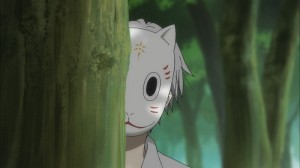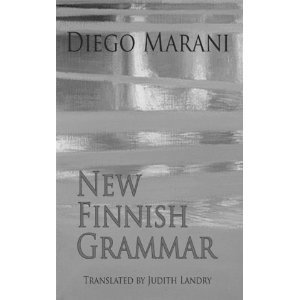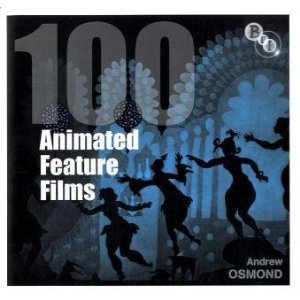Jonathan Clements's Blog, page 16
October 20, 2011
The Ties That Bind
 The manga artist Mutsumi Akazaki was having a bad day. She had been slogging through the latest instalment of the Fractale comic, a tie-in to the anime series of the same name, and mused on her blog that she wished she could work on something she actually enjoyed, that wasn't "uninteresting."
The manga artist Mutsumi Akazaki was having a bad day. She had been slogging through the latest instalment of the Fractale comic, a tie-in to the anime series of the same name, and mused on her blog that she wished she could work on something she actually enjoyed, that wasn't "uninteresting."
Fractale's notoriously chippy director, Yutaka Yamamoto, hit the roof, demanding that Akazaki be fired, and adding insult to injury by suggesting that she sod off and draw her heart's desire, instead of riding the coattails of others.
Akazaki had been very stupid. You don't bite the hand that feeds you, particularly when you are just starting out. And bitching online about how harrrrd your life is is a rookie error, particularly when you are drawing comics for a living, and not, say, packing sardines in a factory or huddling in a tent in Fukushima. Nor are any fans (Fractale presumably still has some) likely to smile on a creative who makes it plain how much they hate the show that Fractale fans love. Fans like to think that creators are other fans, otherwise they feel bilked and cheated.
But Yamamoto's knee-jerk response offers a glimpse of the way that tie-in writers are often treated – ridiculed by some other creators for not being "original", even though fitting one's creative output to meet the restrictions of someone else's franchise is no mean feat in itself.
However, at the end of June, the Gangan Online website posted the next instalment of the Fractale manga bang on schedule. Akazaki had already delivered it, after all, and there was the upcoming compilation release to consider. It was, perhaps, a subtle little reminder that Fractale doesn't actually belong to its director either. The story is by Hiroki Azuma, the show-runner is Mari Okada, and a committee of six executive producers form the actual Jedi Council that steers the franchise through the media. In other words, Yamamoto himself had been given quiet notice that he, too, was working for hire on a product that actually belonged to someone else.
Jonathan Clements is the author of Schoolgirl Milky Crisis: Adventures in the Anime and Manga Trade. This article first appeared in NEO #89, 2011.
October 16, 2011
Tea Time
 An unexpected highlight of the Scotland Loves Anime Festival has turned out to be a surreal quest narrative that has been screened before every film on offer in Glasgow and Edinburgh. It's the new advert for Twinings tea, "Getting You Back to You", (see it here) and according to its makers, is intended as an allegory of ten minutes of "me-time".
An unexpected highlight of the Scotland Loves Anime Festival has turned out to be a surreal quest narrative that has been screened before every film on offer in Glasgow and Edinburgh. It's the new advert for Twinings tea, "Getting You Back to You", (see it here) and according to its makers, is intended as an allegory of ten minutes of "me-time".
"Women today juggle such a wide variety of roles, on a day to day basis, whether it is being a mother, housekeeper, cook, employee or friend. Recent research has revealed that women all over the UK are so focused on looking after others, they do not have the opportunity to take any "me-time", and as a result are sometimes left forgetting who they really are."
By "recent research", I think they mean a focus group at Red magazine, but rediscoveries of the wheel aside, the Twinings advert brings to mind a subject that has been recurring throughout the festival, and particularly at the Education Day on Friday. Here we are, at a week-long series of events dedicated to animation, including not only Scotland Loves Anime, but also showcases for Polish animators and presentations from Aardman and a workshop from Axis. And yet the animated works seen on the most occasions, by the most attendees, regardless of what they actually paid to see, are commercials.
Psyop, the company that made the Twinings advert, are the latest in a long line of animators who have used advertising as a patron of the arts. All three presentations at the Education Day showed commercials as part of their studio showcase, and noted that it was a far better way of paying the bills than animating stick-men in a garret and waiting to be discovered.
The Twinings advert has met with repeated hilarity at Scottish screenings, largely, I think, because some people have confused it with a festival bonus film, only to discover that they are being sold a cup of tea. But in terms of generating interest in the product, it already has people talking. Since part of my job here is to introduce the films, I have had to sit through the adverts before every single one, and have been noting the number of times that animation plays a part. Red Bull, entirely animated. M&Ms, integrating animation and live-action. Even Orange, in their "Phone Break" satire, have had to pay someone to go away and make the "Phone Break" animation that appears on movie screens as part of the advert.
 I've written elsewhere about the most widely seen piece of Japanese animation in 1958, which, contrary to expectations, was not the feature-length colour movie Hakujaden, but a 60-second commercial for Torys Whisky. The recent book Anime-gaku claims that up to 70% of early Japanese commercials used animation in some form, even if it was just a simple graphic presentation of the way that an indigestion tablet worked, or a striking product logo. This has always been the way, and the Festival Director Andrew Partridge and I will be discussing the presence, absence and enduring value of short animation at our Q&A later today.
I've written elsewhere about the most widely seen piece of Japanese animation in 1958, which, contrary to expectations, was not the feature-length colour movie Hakujaden, but a 60-second commercial for Torys Whisky. The recent book Anime-gaku claims that up to 70% of early Japanese commercials used animation in some form, even if it was just a simple graphic presentation of the way that an indigestion tablet worked, or a striking product logo. This has always been the way, and the Festival Director Andrew Partridge and I will be discussing the presence, absence and enduring value of short animation at our Q&A later today.
But first I have to go in for my last day of duties. Firstly, herding cats at the festival jury, in order to pick our winner. Still no name for the award. I have suggested the "Golden Partridge". Someone else has mooted the Scotland Loves Anime Vaginahands Homodolphin. I think we'll just call it the Judges' Award. Then I have Ryosuke Takahashi for a Q&A on his career and an introduction to the Tekken movie. OH…I nearly forgot, I am off to London on the sleeper tonight. I'd better pack!
October 14, 2011
Blog on the Tyne
 Instead of going home after the first weekend of Scotland Loves Anime, I have just lurked up here, watching the films I need to see as a jury member, and preparing for the coming weekend's films in Edinburgh.
Instead of going home after the first weekend of Scotland Loves Anime, I have just lurked up here, watching the films I need to see as a jury member, and preparing for the coming weekend's films in Edinburgh.
Yesterday I went to Newcastle, to act as a respondent to a lecture by Dr Ellis Tinios, who was introducing students to Ritsumeikan University's massive (and free) online database of Tokugawa period books. It is now possible to simply go online and flip through the complete set of Hokusai Manga, for example — an experience liable to surprise many readers who have been repeatedly told that they have some relevance for the study of modern Japanese comics.
Tinios and I often surprise each other with our repeated rediscoveries of how similar the 19th century printing world and the modern anime/manga world actually are. Yesterday alone, his discussion of hand-made books in the 1830s elucidated two mysteries that have long confused scholars of anime history in the 20th century, offering unexpected perspectives from an unexpected direction.
I also met one of the new recruits at Newcastle University's School of Modern Languages — Dr Shiro Yoshioka, who hopes to teach Britain's first university-accredited course on anime next year. A self-confessed fan of Patlabor and Sakura Wars, Dr Yoshioka will be dragging students of Japanese through a series of approaches to the study of Japanese animation. I don't think this will be one of those courses that beats the fandom out of fans; I think they will be in good hands.
Then it was back to Scotland to meet Ryosuke Takahashi, creator of Armoured Trooper Votoms, star guest of the Edinburgh weekend. He is, without a doubt, the nicest person I have ever met in the Japanese animation world, and has oodles to say about the business, from his first days as a rookie recruit at Mushi Productions, through the establishment of Sunrise and the birth of "real robots" in Japanese animation. Even though Takahashi is my biggest responsibility at Scotland Loves Anime, he also looks likely to be the easiest, as he is one of those speakers you can prime with a simple question and get a detailed, ten-minute answer. So, fingers crossed for some great events.
October 10, 2011
Get Lost…
 Although the third edition of the Encyclopedia of Science Fiction is only partly complete, interested readers can access the working text now at the website. I warn you now, with 3.2 million words up online already, it is a time-wasting machine. I've been writing entries on a number of Asian subjects, including a new contender for Japan's first science fiction anime, a forgotten master of pre-manga art, and an ongoing effort to write entries for everybody who's won a Seiun Award. Plus entries on all sorts of fun things, from Korean costume dramas to Chinese feminists, the science fiction of Yukio Mishima and the steampunk of Hitoshi Yoshioka. Since the Encyclopedia focusses on authorship, there are entries on the original creators of Sky Crawlers and Akira, 2001 Nights and Star Blazers. There are details of the Japanese variants of Flowers for Algernon and the translation of Neuromancer, Japanese experts on Jack the Ripper and the big names in yaoi.
Although the third edition of the Encyclopedia of Science Fiction is only partly complete, interested readers can access the working text now at the website. I warn you now, with 3.2 million words up online already, it is a time-wasting machine. I've been writing entries on a number of Asian subjects, including a new contender for Japan's first science fiction anime, a forgotten master of pre-manga art, and an ongoing effort to write entries for everybody who's won a Seiun Award. Plus entries on all sorts of fun things, from Korean costume dramas to Chinese feminists, the science fiction of Yukio Mishima and the steampunk of Hitoshi Yoshioka. Since the Encyclopedia focusses on authorship, there are entries on the original creators of Sky Crawlers and Akira, 2001 Nights and Star Blazers. There are details of the Japanese variants of Flowers for Algernon and the translation of Neuromancer, Japanese experts on Jack the Ripper and the big names in yaoi.
And how much does this all cost you? Nothing. It's all free. It won't be finished for a year or so, but it's being hosted and paid for by Gollancz as part of their SF Gateway. But I'm warning you: it's a time hoover. Do not click on any of the above links if you haven't got an hour or so to spare getting lost in the labyrinth.
The Footprints of a Gigantic Mind
 Out now in the US, and coming in a couple of weeks to the UK, Sherlock Holmes & Philosophy. This collection of essays on matters Sherlockian includes my own "Curious Case of the Dog in Prime Time", a discussion of the Japanese cartoon series Sherlock Hound. See what I did, there?
Out now in the US, and coming in a couple of weeks to the UK, Sherlock Holmes & Philosophy. This collection of essays on matters Sherlockian includes my own "Curious Case of the Dog in Prime Time", a discussion of the Japanese cartoon series Sherlock Hound. See what I did, there?
In fact, my chapter is partly about the reception of Sherlock Holmes in Japan, and partly about the development of anthropomorphic anime. Other contributors have written pieces on, amongst other subjects, Sherlock Holmes and Buddhism, Sherlock Holmes and Hip Hop, unreliable narrators, Star Trek, marriage, feminism and the overall Holmes canon.
October 5, 2011
Scotland Loves…
 Today I'm packing for Scotland Loves Anime, two weekends of Japanese cartoonery held in Glasgow and Edinburgh. This year's line-up has four, count 'em, four Japanese guests, which means I have my work cut out for me interviewing Yumi Sato (Brains Base) and Shuko Yokoyama (Aniplex) about Hotarubi, and Shunsuke Oiji about Colourful. And the cherry on the cake is the legendary Ryosuke Takahashi (that's him in the picture), father of "real mecha", and show-runner on Armoured Trooper Votoms, who will be in Edinburgh to show off his new Pailsen Files, and answering questions after the premiere.
Today I'm packing for Scotland Loves Anime, two weekends of Japanese cartoonery held in Glasgow and Edinburgh. This year's line-up has four, count 'em, four Japanese guests, which means I have my work cut out for me interviewing Yumi Sato (Brains Base) and Shuko Yokoyama (Aniplex) about Hotarubi, and Shunsuke Oiji about Colourful. And the cherry on the cake is the legendary Ryosuke Takahashi (that's him in the picture), father of "real mecha", and show-runner on Armoured Trooper Votoms, who will be in Edinburgh to show off his new Pailsen Files, and answering questions after the premiere.
I'll also be talking to him on Sunday 16th about his long career in the Japanese animation business, beginning with his early days at the famous Mushi Productions. I might also bring up his segment of The Cockpit anime, since I translated it 16 years ago.
 Scotland Loves Anime is actually part of a broader remit called "Scotland Loves Animation". This is reflected in the education day on Friday 14th which sees a number of animators, directors and producers from the global animation community talking about their work. Also, the Polish animation house Platiges Images are sending Daniel Nenow to talk about his superb dogfight animation Paths of Hate. And all the while, Jonathan Clements, author of Schoolgirl Milky Crisis (that's me), will be darting about on stage imparting Quite Interesting facts and odd anime trivia. At some point, I think that festival organiser Andrew Partridge is interviewing me… or I am interviewing him. We will probably end up interviewing each other, and as per usual it will turn into a stand-up routine about Bonkers Things the Japanese Studios Have Done This Year.
Scotland Loves Anime is actually part of a broader remit called "Scotland Loves Animation". This is reflected in the education day on Friday 14th which sees a number of animators, directors and producers from the global animation community talking about their work. Also, the Polish animation house Platiges Images are sending Daniel Nenow to talk about his superb dogfight animation Paths of Hate. And all the while, Jonathan Clements, author of Schoolgirl Milky Crisis (that's me), will be darting about on stage imparting Quite Interesting facts and odd anime trivia. At some point, I think that festival organiser Andrew Partridge is interviewing me… or I am interviewing him. We will probably end up interviewing each other, and as per usual it will turn into a stand-up routine about Bonkers Things the Japanese Studios Have Done This Year.
September 30, 2011
New Finnish Grammar
 One day, I asked my Finnish teacher if it was true that her language had 30 different words for snow. She fixed me with her big, blinky eyes.
One day, I asked my Finnish teacher if it was true that her language had 30 different words for snow. She fixed me with her big, blinky eyes.
"No, you poor deluded fool," she sighed. "We Finns only have one word for 'snow'. The trouble is, you English think that everything white that falls out of the sky is 'snow'."
Finnish actually has more than thirty words for frozen precipitation in a variety of forms, including a word for "powdery snow that's melted just a little bit" (nuoka), a "thin bit of snow on top of ice" (iljanne), and even "the grey lumpy stuff that turns up when slush refreezes" (kohva). Finns have a similarly large number of words for "reindeer", and an oddly precise verbal toolkit for describing cupboards. However, their language doesn't distinguish between sponges and mushrooms, and a single vowel sound separates the differing semantics of "My shelves are nearly full" from "My madness is soon to end."
Of course, there is nothing "special" about Finnish. Every language has its little peculiarities, evolved in reaction to particular situations. The Navajo don't distinguish between pilots, insects or helicopters, while the Chinese have over a dozen shades of red. And Japanese has 1194 ways to say "I love you", along with a culture that refuses to use any of them. Having studied many languages and mastered none, I always return with joyous appreciation to English because it is such a catastrophic car-crash of Latin, Anglo-Saxon, Norman French and Viking Danish, with grammar rules deriving from several different countries, and a veritable multicultural bar-fight of contending nuances, much of which comes down not only to class, but to what someone's great-great-great grandfather did for a living.
In his novel New Finnish Grammar, Diego Marani latches upon Finnish as a test subject for the human condition. In 1940s Italy, an expat Finnish doctor finds a patient with amnesia so severe that he cannot even remember how to speak. Finding evidence on the man's person that he is a Finn, the doctor begins to teach him Finnish from scratch. As Sapir and Whorf once argued with their Linguistic Relativity Hypothesis, the language in which one thinks affects the thoughts that one can have. What if this man isn't Finnish at all? What will this re-programming do to him?
 And if he isn't a Finn called Sampo Karjalainen, who is he? And who will he be when his brain is wired with thirty words for white stuff that falls out of the sky? There are numerous precedents in fiction, most notably the Kaurismäki film Man Without A Past, and many science fiction novels that deal with the power of language to shape thought. But Marani, a professional linguist, latches onto Finland and Finnishness itself for an extended meditation on human nature, patriotism and the soul.
And if he isn't a Finn called Sampo Karjalainen, who is he? And who will he be when his brain is wired with thirty words for white stuff that falls out of the sky? There are numerous precedents in fiction, most notably the Kaurismäki film Man Without A Past, and many science fiction novels that deal with the power of language to shape thought. But Marani, a professional linguist, latches onto Finland and Finnishness itself for an extended meditation on human nature, patriotism and the soul.
Finnish has vowel harmonies and consonantal mutations like Turkish, and a cavalcade of odd little cases that make it infuriatingly precise. Most languages have basic items like singular and plural, nominative and genitive. Finnish has its own bonkers additions, like the abessive, which is the case you use for things that are nothing to do with you, and the partitive, which is a sort of superglue case to fix all the others.
Marani's book returns to the age old tug-of-war between nature and nurture. Is Finnish the way it is because of Finland, or are Finns the way they are because of Finnish? He delves into the Kalevala, that crazy national myth of mighty duels over a sci-fi McGuffin, itself was knocked up as an exercise in bootstrap nationalism in the 19th century. He points to the savage rending of Finland into Reds and Whites during the Russian Revolution, an apocalyptic shattering of social cohesion that is still largely unspoken-of today, and yet which, only recently, I have still seen erupt into a bar-room brawl around me.
Talking to a Finnish history teacher this year, I heard the tale of her grandmother's funeral, to which only a single cousin came. The reason: sixty years ago, grandma married someone of "the wrong colour". Tellingly, I was not told which colour, Red or White, was wrong. It only mattered that the twain could never meet.
 And, of course, there is Mannerheim, that national demigod – a former spy and orientalist, catapulted out of a dead-end military career into a role as the country's leader in the unwinnable Winter War. Mannerheim, too, was a reluctant student of Finnish, living for most of his life with only a smattering sufficient to deal with the servants. It was only in middle age, called upon to deliver speeches to his public, that he swotted up sufficiently. Extant speeches show his Finnish to be halting and strangely accented – a sign that this hero of "Finnish" nationalism was a native speaker of Swedish, who had spent 30 years in the Russian army.
And, of course, there is Mannerheim, that national demigod – a former spy and orientalist, catapulted out of a dead-end military career into a role as the country's leader in the unwinnable Winter War. Mannerheim, too, was a reluctant student of Finnish, living for most of his life with only a smattering sufficient to deal with the servants. It was only in middle age, called upon to deliver speeches to his public, that he swotted up sufficiently. Extant speeches show his Finnish to be halting and strangely accented – a sign that this hero of "Finnish" nationalism was a native speaker of Swedish, who had spent 30 years in the Russian army.
Marani is a good linguist, with a fine ability to romanticise issues that most people would find dull. He describes the construction of a Finnish sentence with allusions to orbits and trajectories in an imaginary solar system. He delves into the etymology of the simplest words with a verve that conjures wizards in primeval forests and witches chanting spells over swamps. He also writes himself a get-out-of-jail-free card, using his narrator's student status as an excuse for numerous typographical and grammatical errors – annoyingly, even in a book that sings of the joys of vowel harmony, there are misplaced umlauts and errant letters.
One day, New Finnish Grammar is going to be a great movie. Some worthy agglutination of government funding bodies will knock up a Europudding that shoots in Trieste and Helsinki, starring a great Finnish actor like Mikko Kouki as the amnesiac Sampo. There is just enough plot in Marani's narrative to sustain a movie, with cutaways to the essence of Finnishness, and fight scenes on the Eastern front against the Russians, perhaps even with magic-realist scenes that illustrate the wonder of Finnish grammar with Marani's warlocks and witches, paintings of Akseli Gallen-Kallela come to life, or symbolic representations of what happens when a subject switches from accusative to partitive.
Well, maybe not the last. Three years into my Finnish lessons at the London School of Slavonic and East European Studies, mere weeks away from attaining my Lower Intermediate diploma, my teacher coughed nervously, and told the class to prepare themselves for a Finnish bombshell.
"The thing is," she said, "Finnish doesn't really have an accusative case. Don't panic, we can use the genitive or partitive just fine, but everything I have told you so far about the accusative has been a convenient lie."
She patted the arm of one of my fellow classmates, who had started to sob.
"Don't cry," she said. "It'll be all right. It'll be all right."
Jonathan Clements is the author of Mannerheim: President, Soldier, Spy.
September 23, 2011
Academic Spats
 Kyoto's Seika University now offers a PhD in manga, intended to train "researchers, professors, and manga artists." Imagine them mumbling the last bit, because nobody in their right mind will spend seven years in tertiary education to become an pro artist, not when they can become one aged 17 if they win the right competition.
Kyoto's Seika University now offers a PhD in manga, intended to train "researchers, professors, and manga artists." Imagine them mumbling the last bit, because nobody in their right mind will spend seven years in tertiary education to become an pro artist, not when they can become one aged 17 if they win the right competition.
Perhaps that is what Scottish MP Tom Harris was reaching for when he recently attacked the new postgraduate course in Comics Studies at Dundee University, claiming that it was useless. Well, to him, maybe, but not everyone wants to be a politician. Harris's comments were particularly baffling because he appeared to be setting standards that he not attained himself. He carped that a degree from Oxford in Politics, Philosophy and Economics was a sure-fire means of success in government – an odd thing to hear from a man with an HND in Journalism from a former polytechnic.
Public rebuttals have confused several issues – including funding, credentialism, and the relative merits of subjects. If someone wants to cough up for an M.Litt in Comics Studies at Dundee, they are free to do so. It's not like they are going to cost the taxpayer any more! It is unlikely to be much use in seeking a political career, but only an idiot would think otherwise. I wrote my Master's thesis on manga and anime. It helped get me this job, telling you this. Or did it? NEO never asked to see my resumé; they only cared about what I wrote.
However, Dundee is not necessarily a magic portal to a career in comics, either. A Master's degree is a "licence to practice", but Dundee's degree is in Comics Studies. Just as would-be filmmakers pick Film, and would-be film critics pick Film Studies, there is a difference in discipline. It won't turn you into Neil Gaiman, more likely the guy who talks about Neil Gaiman at a conference. Like Kyoto's new doctorate, it is liable to create researchers and professors, maybe even editors, but if you want to be a comics artist, study Art. And if you want to be a politician, apparently an HND in Journalism is what you need.
Jonathan Clements is the author of Schoolgirl Milky Crisis: Adventures in the Anime and Manga Trade. This article first appeared in NEO 88, 2011.
September 16, 2011
Eating Chinese
 There are many apocryphal stories about Chinese food, dating back to the dual fallacy that Marco Polo introduced ice cream and pasta to Europe – he didn't. According to Lily Cho, the story of Chinese food is also the story of those moments where modernity stumbles, pausing for a moment to glance into a parallel world, not only of alien foodstuffs, but also of the great diaspora of Chinese emigrants. In a cheeky sense, her book Eating Chinese: Culture on the Menu in Small Town Canada presents it as the story of the Chinese discovery of the rest of the world, as coolies on the trans-Canadian railroad set up shop in obscure one-horse towns, serving food at first to their co-workers, and then to locals when the construction work carries on its way.
There are many apocryphal stories about Chinese food, dating back to the dual fallacy that Marco Polo introduced ice cream and pasta to Europe – he didn't. According to Lily Cho, the story of Chinese food is also the story of those moments where modernity stumbles, pausing for a moment to glance into a parallel world, not only of alien foodstuffs, but also of the great diaspora of Chinese emigrants. In a cheeky sense, her book Eating Chinese: Culture on the Menu in Small Town Canada presents it as the story of the Chinese discovery of the rest of the world, as coolies on the trans-Canadian railroad set up shop in obscure one-horse towns, serving food at first to their co-workers, and then to locals when the construction work carries on its way.
Amazon has an aggressively negative review of Cho's book, from a reader who seems to have been expecting a cookbook or a set of breathless anecdotes, and who balks at the level of high-falutin' big words. But this is a disservice to Cho, whose book is actually far more approachable than the work of many other cultural theorists, offering a witty, perceptive analysis of a distinctly odd corner of Western culture – the seemingly ubiquitous small-town Chinese restaurant. In the process, she offers some illuminating stories about the history of Chinese food abroad, particularly such foreign interpolations as lemon chicken, sweet and sour pork, and chop suey.
Cho is interested in the menus themselves, and what they tell Canadians about their own cuisine. There is, in a sense, no such thing as "Canadian" cuisine, until the day that a Chinese restaurateur added some Western dishes at the end of his menu for those diners who were afraid of "foreign food". Cho uses the Chinese menu as a window into what was thought to be "Canadian" food over the last century.
Her cover speaks volumes to the oriental linguist. Its image addresses two different audiences, depending on the language they can read. To Anglophone readers, it shows a shabby café with kitsch bamboo lettering proclaiming it to be "Shangri-La". The restaurant's name in Chinese is "Peach Garden" – an identity rooted in much deeper, classier classical resonances. This dual identity is repeated throughout the Chinese restaurant world. One of my favourite London eateries, a diner near King's Cross, has the awful English name Chilli Cool, and the classier Chinese name Lao Chengdu. It is the latter that identifies it for Sinophone customers as an authentic Sichuan restaurant, and not just another dive. I have seen this pattern repeated throughout the world, from Australia to Aberdeen, with twee, middle-brow English names balanced by far more meaningful, resonant titles in the proprietors' native language. Sometimes, the pun is much cleverer: Bar Shu, in London's Soho, is both an oriental-sounding establishment, and an evocation of the two ancient names of Sichuan: Ba and Shu. However, even then it has a "secret" Chinese name: Shuiyue Bashan, or "Moon on the Waters and Mountains of Ba."
There is one odd mis-step, in which Cho dismisses as "urban myths" rumours of restaurants with one menu for Westerners and another for Chinese (p.36). This makes me wonder if her experience is not entirely limited to small-town Canada, as I have regularly asked for, received, and ordered from Chinese-only menus all over the world. In my experience, most restaurants have special menus for the use of Chinese patrons, although they are happy to provide them for anyone else who can read them.
Jonathan Clements is the author of Marco Polo and Mannerheim: President, Soldier Spy.
September 12, 2011
100 Animated Feature Films
 Doing exactly what it says on the tin, this friendly, accessible volume from the British Film Institute showcases a hundred cartoons, highlighting their points of interest, importance in the history of film, and impact on audiences. Since only a hundred films are listed, there will undoubtedly be gripes from aficionados who feel that their favourite film has been slighted. Far more relevant to this book's long-term value is its placing of all animation in an international context. The likes of Hayao Miyazaki and Satoshi Kon are not rated in an anime ghetto where everyone gets a prize, but against the entire world of animation where everyone has to play with the big boys – a mature and welcome appraisal of Japanese cartoons, well overdue.
Doing exactly what it says on the tin, this friendly, accessible volume from the British Film Institute showcases a hundred cartoons, highlighting their points of interest, importance in the history of film, and impact on audiences. Since only a hundred films are listed, there will undoubtedly be gripes from aficionados who feel that their favourite film has been slighted. Far more relevant to this book's long-term value is its placing of all animation in an international context. The likes of Hayao Miyazaki and Satoshi Kon are not rated in an anime ghetto where everyone gets a prize, but against the entire world of animation where everyone has to play with the big boys – a mature and welcome appraisal of Japanese cartoons, well overdue.
Jonathan Clements is the author of Schoolgirl Milky Crisis: Adventures in the Anime and Manga Trade. This review first appeared in the SFX Ultimate Guide to Anime, 2011.
Jonathan Clements's Blog
- Jonathan Clements's profile
- 123 followers



